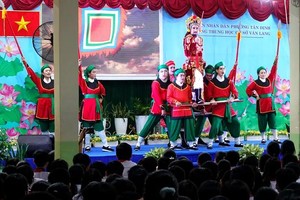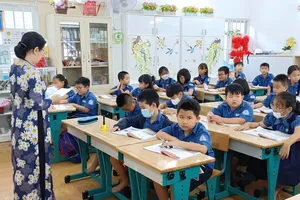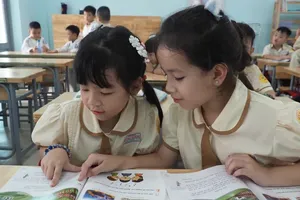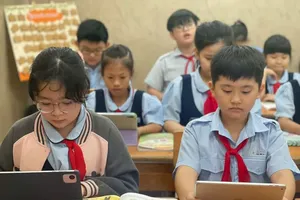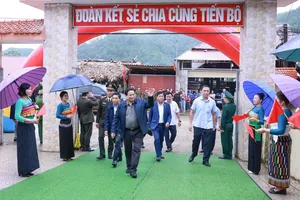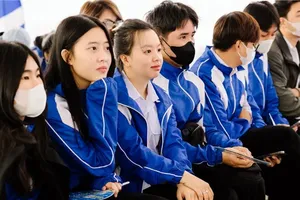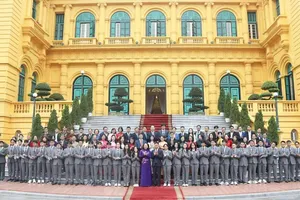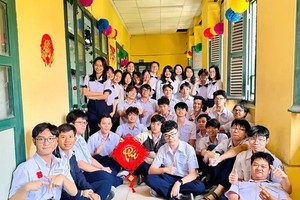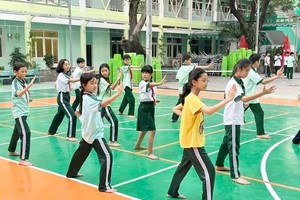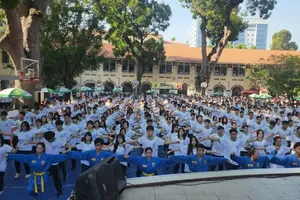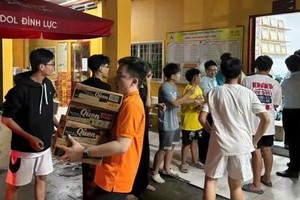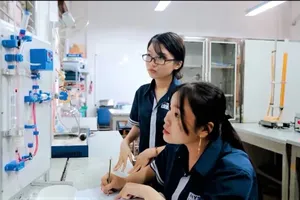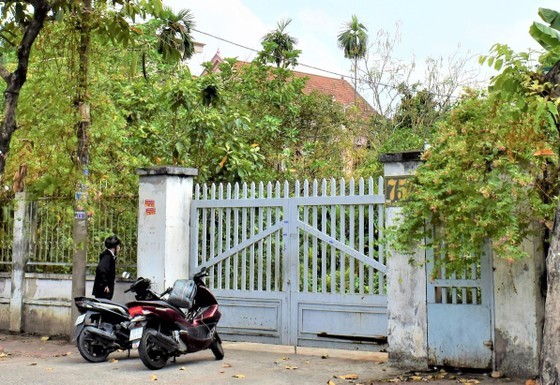 |
The land area of nearly 11,000 square meters at 75/4 Phan Van Hon Street in HCMC’s District 12 |
As the land fund for building schools is increasingly scarce, many land plots have been left abandoned but can’t be recovered, local administration and the People's Committee of Ho Chi Minh City needs to be more determined in recovering premises and warehouses that are used for the wrong purposes to build new schools.
The land area of nearly 11,000 square meters at 75/4 Phan Van Hon Street in HCMC’s District 12 was licensed by the municipal People's Committee for the SK5 research unit under the Ministry of Health to take over since 1983 for planting and studying precious medicinal herbs. The license term is 10 years. The decision clearly stated that after 12 months, if the land plot is not used for improper purposes, the license will be revoked.
After that, SK5 changed its name to Vietnam Ginseng Center, or the Union of Ginseng Production Science and Medicinal Materials, now it is Ho Chi Minh City Ginseng and Medicinal Center. For many years, relevant agencies assessed that the land plot has been abandoned. It is worth mentioning that the city decided to revoke the land plot more than 20 years ago for the construction of the degraded Nguyen Anh Thu Secondary School where nearly 1,000 students are studying, but the city has not so far recovered the land plot.
According to Vice Chairman of District 12 People's Committee Dau An Phuc, the reason given by the Center for Ginseng and Medicinal Plants in Ho Chi Minh City is that the land is used for planting medicinal plant varieties in the southern provinces. However, at present, the land does not grow any medicinal plants.
Furthermore, the tenant of the nearly 11,000 square meter land area at 419 in Vinh Vien - Tran Nhan Ton Street in District 10 also disagreed to hand over the land plot. Previously, the land area at 419 Le Hong Phong was owned by the state. Before 2000, the People's Committee of Ho Chi Minh City leased the premises to Saigon Shoe Company (GSG for short).
In 2007, the People's Committee of Ho Chi Minh City continued to lease this land to GSG which used the land plot as offices, warehouses, and shoe and bag factories. The decision of the municipal People's Committee clearly stated that GSG is not allowed to sub-lease land and assets attached to the land. However, in the process of using, GSG arbitrarily sub-leased the premises and was fined VND720 million by the Inspectors of Ho Chi Minh City Department of Natural Resources and Environment for violations in land management and use.
In April 2017, the People's Committee of District 10 proposed that the city People's Committee stop leasing land to GSG at 419 Le Hong Phong for building a secondary school for students in wards 1, 2, and 3 of District 10 where there is no secondary school.
By May 2019, the Ho Chi Minh City People's Committee had the policy to recover and in May 2021 officially issued a decision to recover the land. Up to now, after nearly 2 years since the decision on land acquisition was made, the land acquisition has not been completed; as a result, students in wards 1, 2, and 3 must study in secondary schools in neighboring wards.
Chairman of the People's Committee of Ho Chi Minh City Phan Van Mai said that the city has a population of more than 10 million people, excluding the migrant population, so the city has difficulties in making all city dwellers access educational and medical services. For example, according to the standards of the education sector, the city lacks about 3,000 classrooms whereas as per the criterion of 300 classrooms per 10,000 children in school ages (from 3 to 18 years old), the city still lacks about 8,000 classrooms.
Recently, the People's Committee of Ho Chi Minh City has issued the Education Development Plan for the city to 2030 with a vision to 2045 with many important targets. In particular, on the planning scheme of the school network, the city sets a target that by 2030, 60 percent of preschools, 80 percent of primary schools, 70 percent of junior high schools and 50 percent of public high schools meet the national standards. To achieve this goal, local administrations must make a lot of effort and determination.
Recently, at a meeting with the supervisory delegation of the 15th National Assembly on the implementation of the government’s Resolution No. 88/2014/QH13 and the National Assembly’s Resolution 51/2017/QH14 on program renewal at the end of March 2023, leaders of Ho Chi Minh City continued to affirm that the city has always been aware of comprehensive innovation in education and training, even though it bumped into difficulties because the city’s population grows about 200,000 people on average each year, including more than 40,000 students.
In addition to satisfying the learning needs of permanent city dwellers, the city also takes care of migrant residents from other localities who come to the city to live and study. The city has been making a long-term plan to achieve the goal of reducing the number of students per class by increasing spending on building schools to meet the needs of the people.
As for the abandoned public land, which is happening quite popularly, Associate Professor Tran Hoang Ngan, a member of the National Assembly, acknowledged that the recovery of land plots of central agencies and ministries is not easy. Voters are very concerned about the matter petitioning many times when many land plots are left abandoned while there is no land for building schools. Therefore, voters voiced their opinion that the Ho Chi Minh City government needs to have a drastic solution to handle it.
